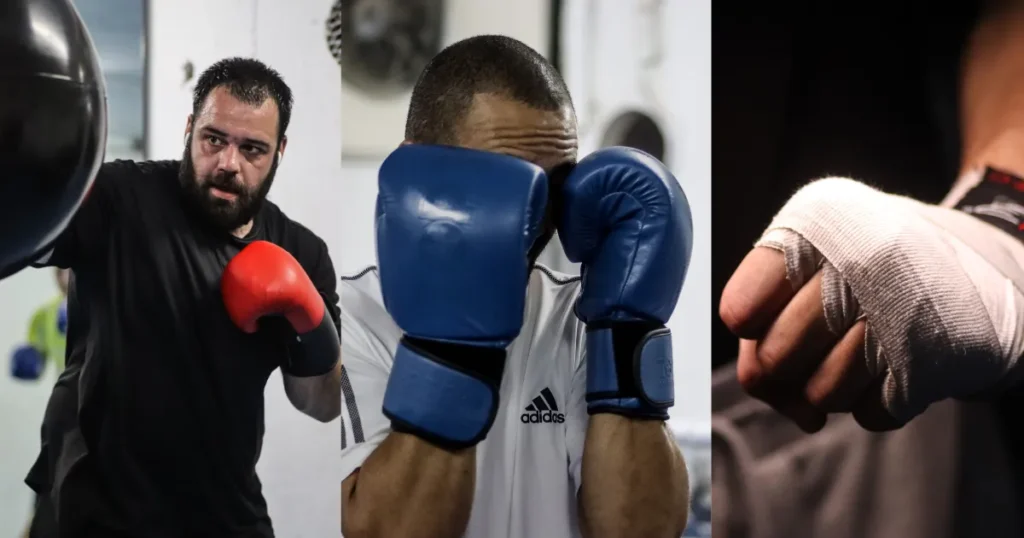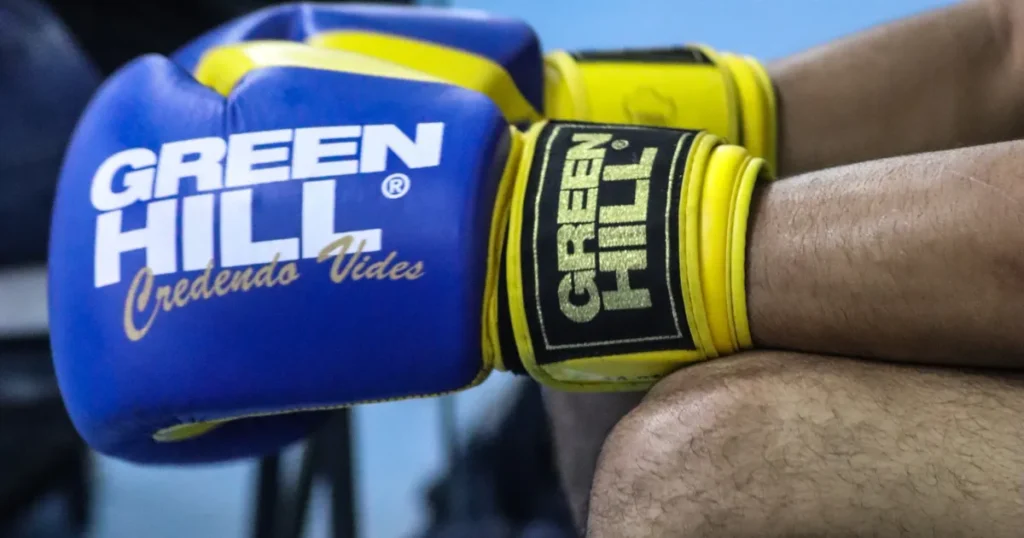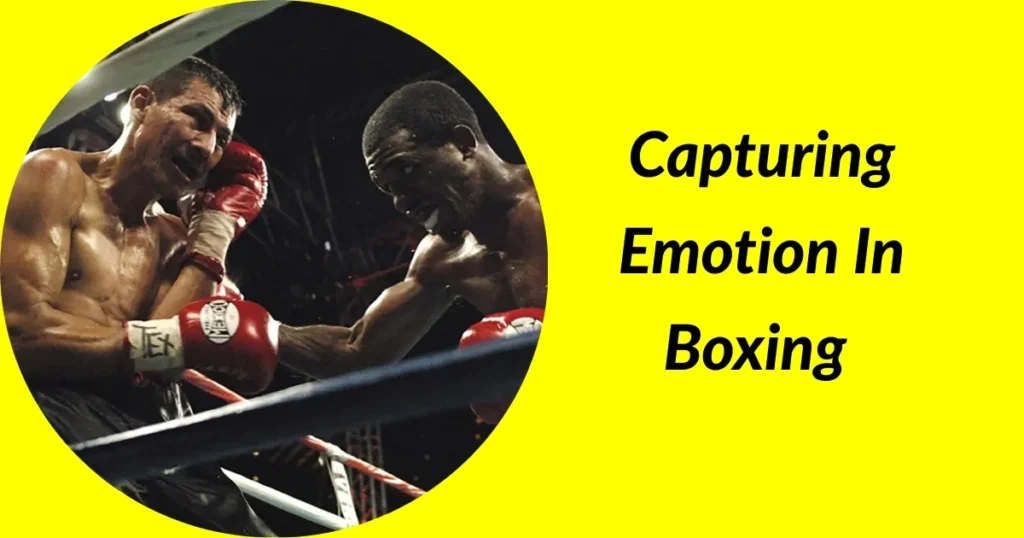[Boxing Gloves Photo] The roar of the small crowd, the squeak of shoes on the canvas, the rhythmic thud of leather on gloves – amateur boxing is a raw, visceral spectacle. It’s a world away from the glitz and glamour of professional bouts, yet it holds a unique beauty and intensity, a pure distillation of athletic endeavor and human spirit. As a photographer specializing in sports, I find few subjects as compelling and photographically rewarding as the amateur boxing scene.
- Freezing Motion In Boxing Photography
- Storytelling Through Boxing Photography
- Capturing Emotion In Boxing Photos
- Boxing Gloves in Motion - A Ringside Perspective
- Elevate Your Game: Join the Amateur Sports Photography Hub!
Capturing the essence of amateur boxing through a lens requires more than just pointing and shooting. It demands an understanding of the sport’s nuances, an anticipation of fleeting moments, and a keen eye for the raw emotion etched on the faces of these aspiring warriors. Boxing Gloves in Motion is about freezing time and telling the story of dedication, sacrifice, and the burning desire to compete.
Boxing Gloves in Motion – A Ringside Perspective
The Unique Visual Landscape of Amateur Boxing:
Boxing Gloves in Motion – Amateur boxing offers a distinct visual palette compared to its professional counterpart. The environments are often more intimate, held in local gyms, community centers, or school auditoriums. The lighting can be challenging, ranging from harsh fluorescent tubes to dimly lit corners, demanding adaptability and a mastery of photographic techniques. The equipment might be less polished, and the canvas might be worn, but this rawness only adds to the narrative’s authenticity.
The athletes are often at the beginning of their journey, their expressions a mixture of nervous anticipation, focused determination, and the sheer physical exertion of the fight. A vulnerability and an unvarnished passion are incredibly captivating to photograph.
Gear and Techniques for Ringside Success:
To effectively capture the action and emotion of amateur boxing, a well-chosen gear setup and honed techniques are essential:
- Camera Body: A DSLR or mirrorless camera with a fast continuous shooting rate (at least 8-10 frames per second) is crucial for capturing the rapid movements and fleeting expressions. Excellent autofocus capabilities, especially in challenging lighting conditions, are also paramount.
- Lenses: A versatile lens selection is key.
- Fast Prime Lenses (e.g., 50mm f/1.4, 85mm f/1.8): These excel in low light and provide beautiful bokeh (background blur) to isolate the subject and convey emotion. They are ideal for capturing portraits and close-up action.
- Zoom Lenses (e.g., 24-70mm f/2.8, 70-200mm f/2.8): These offer flexibility to capture wide-angle action shots and tight crops from a safe distance. The constant f/2.8 aperture is vital for maintaining sufficient light and a shallow depth of field.
- Lighting:
- Natural Light: Whenever possible, utilize available natural light by positioning yourself to take advantage of it.
- On-Camera Flash: A powerful on-camera flash with a diffuser can be a lifesaver in poorly lit venues. Mastering bounce flash (angling the flash towards a ceiling or wall) can create softer, more flattering light.
- Off-Camera Flash (Advanced): For more controlled lighting, consider using off-camera speed lights with modifiers strategically placed to illuminate the ring. This requires more setup and experience.
- Shooting Techniques:
- Anticipation: Study the fighters’ movements, their tells, and the rhythm of the bout to anticipate key moments, such as punches, dodges, and clinches.
- Burst Mode: Utilize your camera’s continuous shooting mode to capture a sequence of action, increasing your chances of getting the perfect shot.
- Focusing: Employ continuous autofocus (AF-C or Servo AF) and carefully track the fighters’ movements. Single focus (AF-S or One-Shot AF) is suitable for capturing static portraits.
- Shutter Speed: A fast shutter speed (at least 1/500th of a second, and ideally faster for peak action) is necessary to freeze the motion of punches and prevent blur.
- Aperture: Shoot with a wide aperture (f/1.4 – f/2.8) to isolate the subject and create a shallow depth of field, blurring the distracting background.
- ISO: Be prepared to increase your ISO in low-light conditions, but aim to keep it as low as possible to minimize noise. Learn your camera’s noise performance at different ISO levels.
- Composition: Experiment with different angles and perspectives. Get low to the canvas, shoot through the ropes (carefully and legally!), and look for interesting lines and shapes. Don’t just focus on the punches; capture the reactions, the coaches’ intensity, and the crowd’s emotions.
- Storytelling: Think beyond individual shots. Aim to capture a sequence of images that tells the story of the fight, from the pre-bout preparations to the final bell.
Capturing the Narrative Beyond the Punches (Boxing Gloves in Motion):
While the action inside the ring is paramount, the story of amateur boxing extends far beyond the punches thrown. Look for these compelling narratives:
- The Intense Focus: The unwavering concentration on a fighter’s face before the bell rings.
- The Corner Work: The animated instructions and support from the coaches between rounds.
- The Raw Emotion: The elation of victory, the disappointment of defeat, the sheer exhaustion after a hard-fought bout.
- The Camaraderie: The respect and sportsmanship between competitors, even after a grueling fight.
- The Support System: The proud parents, the dedicated trainers, the cheering teammates in the crowd.
- The Journey: The fighters’ dedication and hard work are evident in their physiques and commitment to the sport.
Ethical Considerations (Boxing Gloves in Motion):
As with any form of photography, ethical considerations are crucial:
- Respect the Athletes: Be mindful of their vulnerability and avoid intrusive or disrespectful shots.
- Obtain Permission: If possible, especially for behind-the-scenes access, seek permission from organizers and athletes.
- Be Aware of Safety: Position yourself safely and avoid obstructing the view of officials or the audience.
- Represent Truthfully: Avoid manipulating images in a way that misrepresents the reality of the event.
Capturing Emotion In Boxing Photos: Boxing Gloves in Motion
Capturing the raw emotion in boxing photography elevates a good action shot to a compelling image. It’s about going beyond the spectacle of the fight and delving into the human experience within the ring. This requires a photographer to be both technically proficient and emotionally intelligent, able to anticipate and seize those fleeting moments that reveal the inner state of the athletes.
Of course, the face is the primary canvas for emotion. Look for the intense focus in the eyes before the bout, the grimace of pain during a hard exchange, the elation of a well-landed punch, the frustration of a missed opportunity, and the sheer exhaustion as the rounds wear on. Pay close attention to the subtle nuances: the tightening of the jaw, the flare of the nostrils, and the beads of sweat mingling with tears or blood. These details can speak volumes.
However, emotion isn’t confined to the face alone. A boxer’s body language is equally expressive. The slump of the shoulders in defeat, the triumphant raise of the arms in victory, the protective guard held high, the clenched fists, the way a fighter leans on the ropes in exhaustion—all contribute to the emotional narrative.
Camera Settings – Sport Photos
To effectively capture these emotions, a photographer must be present and engaged. Anticipate the ebb and flow of the fight, and be ready to react quickly. A fast shutter speed is still essential to freeze the action, but don’t get so caught up in the technicalities that you miss the human element. Use a shallow depth of field to isolate the subject and blur distracting backgrounds, drawing the viewer’s attention to the emotional focal point. Choose your lens wisely; a telephoto lens can capture the intensity from a safe distance, while a wider lens can create a sense of intimacy and immediacy.
Beyond the fighters themselves, look for emotion in the periphery. The anguish of a coach watching their fighter take a beating, the joy of a family member celebrating a victory, the collective gasp of the crowd at a dramatic turn of events – these secondary narratives enrich the overall emotional impact of your photographs.
Storytelling Through Boxing Gloves in Motion
Storytelling through boxing photography goes beyond capturing isolated moments; it’s about crafting a visual narrative that unfolds across a series of images. It’s about conveying the drama, the tension, and the human drama of the fight, from the pre-bout rituals to the final bell and beyond. This approach requires a photographer to think like a visual journalist, seeking out the key elements contributing to the story.
The narrative often begins before the fighters even enter the ring. Capture the preparations in the locker room: the focused wrapping of hands, the intense gaze in the mirror, the quiet moments of reflection, the animated pep talks from the coaches. These images establish the context and build anticipation for the upcoming contest.
Once the action begins, don’t just focus on the punches. Look for the ebb and flow of the fight, the momentum shifts, the strategic adjustments made by the fighters and their corners. Capture the contrasting styles, the different approaches, and the tactical battles within the larger physical confrontation.
Pay attention to the details that enrich the story. The sweat flying off a fighter’s brow, the spray of water from a corner man’s towel, the marks of battle accumulating on the fighters’ faces, and the referee’s reactions – these elements add depth and texture to the visual narrative.
The story doesn’t end with the final bell. Capture the immediate aftermath: the exhaustion and relief, the elation of victory, the disappointment of defeat, the embrace of opponents, the concern of the medical staff. These moments provide closure and a sense of resolution to the narrative.
A powerful boxing photo story often incorporates a variety of perspectives and focal lengths. Wide shots establish the environment and the scale of the event, medium shots capture the action and the interaction between the fighters, and close-ups reveal the raw emotion and the physical toll of the fight.
Ultimately, storytelling through boxing photography is about creating a visual experience that resonates with the viewer, conveying what happened and how it felt. It’s about crafting a narrative that transcends the sport and speaks to universal themes of struggle, perseverance, and the human spirit.
Freezing Boxing Gloves in Motion
Freezing the motion in boxing photography is essential for capturing the sport’s speed, power, and impact. While a blurred punch can sometimes convey a sense of force, it often lacks the clarity and impact of a sharply frozen moment. To achieve this, a photographer must master the interplay of shutter speed, aperture, and ISO while also anticipating the action and employing precise focusing techniques.
Photography Tips
The most critical factor in freezing motion is shutter speed. A general rule of thumb for boxing is to start with a shutter speed of at least 1/500th of a second. However, for crisp images of peak action, such as a punch connecting, you’ll often need to go much faster, perhaps 1/1000th of a second or even higher. The quicker the shutter speed, the less motion blur you’ll get, but the less light will reach your camera’s sensor.
This is where aperture and ISO come into play. A wide aperture (e.g., f/2.8) allows more light into the camera, enabling you to use a faster shutter speed. However, a wide aperture also creates a shallow depth of field, making focusing more challenging. You’ll need to focus precisely, aiming to keep the fighter’s face and the point of impact in sharp focus.
- ISO controls your camera’s sensitivity to light. In low-light situations, you may need to increase your ISO to achieve a fast enough shutter speed and a wide enough aperture. However, increasing ISO can also introduce noise (grain) into your images, so it’s a balancing act. Learn your camera’s noise performance at different ISO levels and keep it as low as possible while still getting the shot.
Beyond the technical settings, anticipation and timing are crucial. The best way to freeze a punch is to anticipate when it will land and fire the shutter just before or at the moment of impact. This requires a deep understanding of boxing technique and the rhythm of the fight. Observe the fighters’ movements, their tells, and how they telegraph their punches.
- Continuous autofocus (AF-C or Servo AF) is essential for tracking the rapid and unpredictable movements of boxers. Use a focus point or focus area appropriate for the situation and keep it trained on your subject’s face or upper body. Shooting in burst mode can also increase your chances of capturing the perfect moment of impact.
- Panning, a technique for moving your camera along with the subject, can be used sparingly in boxing photography. While it doesn’t completely freeze the motion, it can create a sense of speed and dynamism, with the subject sharp and the background blurred. However, it’s a complex technique to master and requires a slower shutter speed, which can also result in some motion blur on the subject.
Ultimately, freezing motion in boxing photography combines technical mastery, anticipation, and a bit of luck. You can capture this dynamic sport’s explosive power and split-second action by understanding the interplay of shutter speed, aperture, and ISO, and practicing your timing and focusing skills.
Photographing amateur boxing is an exhilarating challenge that pushes your photography skills to the limit. Unlike highly controlled professional events, amateur bouts often take place in varied lighting conditions, from dimly lit community halls to brightly lit sports complexes.
This means you need to be incredibly adaptable and quick with your camera settings to capture sharp, impactful images. The fast-paced, unpredictable nature of the sport demands a keen eye and even faster reflexes; a crucial moment, like a perfectly landed punch or a telling expression, can last mere milliseconds.
Boxing Photography: Essential Camera Settings — Q&A
| Question | Answer |
|---|---|
| What camera settings are best for boxing photography? | For dynamic sports like boxing, you should **shoot in burst mode and continuous focus**. Set your camera to high-speed burst mode so it captures multiple frames per second. Simultaneously, use continuous focus, which allows your camera to constantly track the subject as long as the shutter button is held down halfway. This ensures you catch those fleeting moments of action. |
| What is the best focal length for boxing photography? | While an **18-35mm** lens is great for wide shots, capturing the overall scene of the ring and atmosphere, you’ll ideally want something with more reach for boxing. Aim for a lens that can zoom in to around **200mm**. This might seem like a lot for a boxing ring, but this reach is crucial for getting in nice and close to capture intricate details, such as expressions, cuts, and blood, that tell a more compelling story. |
| What shutter speed is ideal for boxing? | Your **shutter speed** is the most critical setting for boxing photography. You’ll want to look at a minimum of **1/1000th of a second**, but often even higher speeds are preferable to truly freeze fast-paced action. Once you’ve set your shutter speed to effectively stop motion, you can then adjust your other settings. Naturally, you’ll want to keep your **ISO as low as possible** to minimize noise, but maintaining a high shutter speed takes precedence in this fast-action scenario. |
Elevate Your Game: Join the Amateur Sports Photography Hub!
Are you passionate about capturing the action, drama, and emotion of amateur sports? Whether you're shooting local leagues or weekend tournaments, your perspective matters!
Share tips, review gear, and showcase your best shots with a supportive community of fellow amateur sports photographers.





